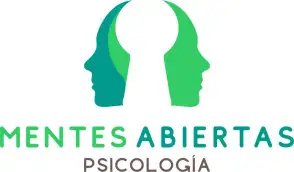Can the brain heal itself from emotional wounds? EMDR therapy is based on a bold yes. At its core lies the Adaptive Information Processing (AIP) model, a compelling and hopeful theory about how the human nervous system is built to process, reorganize, and overcome difficult experiences.
The Core of EMDR: The AIP Model
The AIP model suggests that humans have a natural, built-in system for emotionally processing life events. When this system functions well, memories are integrated into our autobiographical narrative and no longer cause distress.
However, when an experience is too overwhelming or emotionally intense, this natural process can be blocked. The memory becomes "frozen" in the brain—stored with the original sensations, emotions, and beliefs from the time it occurred. These unprocessed memories can later trigger emotional symptoms and dysfunctional behaviors.
Why Do Some Memories Get Stuck?
Several factors can disrupt natural processing: severity of the event, developmental stage, lack of support, or repeated negative experiences. Instead of being filed away properly, these memories remain raw and active, like open wounds in the mind.
The AIP model holds that if these memories are reactivated in a safe, structured context—like an EMDR session—and paired with bilateral stimulation, the brain resumes its healing function and integrates the memory.
How EMDR Supports Adaptive Processing
During an EMDR session, the therapist helps the client focus on a disturbing memory while receiving bilateral rhythmic stimulation (eye movements, taps, or alternating sounds). This seems to activate both brain hemispheres and stimulates the processing network.
Over time, the memory changes. It doesn’t vanish, but it loses its emotional charge, becomes less vivid, and connects to more adaptive beliefs and emotions.
Theories Behind EMDR’s Effectiveness
- Working memory model: Divided attention weakens the emotional intensity of the memory.
- Hemispheric integration: Right-brain emotional content is processed alongside left-brain logic and language.
- Neural reconsolidation: EMDR creates new connections and re-encodes the memory in a healthier way.
- Parasympathetic activation: The body shifts into a state of calm, reducing reactivity and facilitating reflection.
Example of a Capital-T Trauma: Post-Traumatic Stress
Victor, age 41, was held at gunpoint three years ago. Physically unharmed, he now suffers from panic attacks, hypervigilance, and nightmares. Loud sounds trigger immediate fear responses. His nervous system continues to behave as though the trauma is happening now.
In EMDR sessions, Victor revisits the memory of the gun, the yelling, and his frozen body. Through bilateral stimulation, he recalls surviving, the help he received, and his inner strength. Eventually, he reclaims the narrative: he is no longer a victim trapped in time, but a survivor who overcame danger.
Example of a Small-t Trauma: Social Anxiety
Claudia, 30, dreads speaking in meetings. Since childhood, she remembers being scolded for minor speaking mistakes, and mocked by a teacher for stuttering. These events were not life-threatening, but they shaped a deep fear of judgment and exposure.
Through EMDR, Claudia revisits these subtle but painful memories. As they are processed, her emotional reactivity diminishes. Her posture shifts, her voice steadies, and she begins to feel more secure in social situations.
What Can EMDR Help With?
Though originally designed to treat PTSD, EMDR has proven helpful for many psychological difficulties:
- Post-traumatic stress disorder
- Generalized anxiety, phobias, panic attacks
- Complicated grief
- Attachment trauma and developmental wounds
- Chronic pain and psychosomatic symptoms
- Addictions and emotional dysregulation
A Model of Hope: The Brain as Its Own Healer
What makes the AIP model so revolutionary is its core message: healing is not about forgetting, but about integrating. When the brain’s adaptive system works again, painful experiences no longer control our reactions—they become part of our story, but no longer our prison.
EMDR doesn’t erase memories. It helps us face them, process them, and transform their emotional weight. It invites us to trust in the intelligence of our own mind and nervous system.
In the end, what once hurt, now informs. What once paralyzed, now frees. What once defined us, becomes a bridge toward growth and inner peace.


